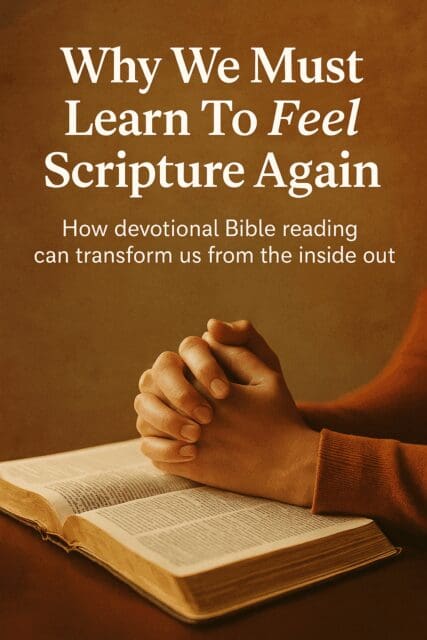4. Dynamically and Prayerfully Apply
When it’s time to apply Scripture, don’t apply it statically. Apply it prayerfully and dynamically.
Static Application:
“Love bears all things” → My husband is difficult. This verse reminds me of him.
Prayerful Application:
“Lord, help me love my husband even when it’s hard. Change my heart so I can bear all things.”
The first approach notices something.
The second approach invites transformation.
Static application often centers our frustrations. Prayerful application centers God’s grace.
This kind of application helps us feel Scripture.
5. Make the Jesus Connection
Look for Jesus. All Scripture points to him, flows from him, or anticipates him.
To know God, you must know Jesus. To feel Scripture, you must see Jesus throughout its pages — in the Old Testament, the Gospels, the epistles, and the unfolding story of redemption.
Jesus did this himself on the road to Emmaus (Luke 24), explaining “what was said in all the Scriptures concerning himself.”
In the Old Testament, ask:
• How does this point to Jesus?
• Did Jesus quote this?
• What does this reveal in light of Christ?
In the New Testament epistles, view Jesus as the palette and the apostles as painters showing how to use the colors he revealed.
Seeing Jesus foreshadowed transforms dry history into the long road toward the Incarnation.
If you want to keep Christ central in life, you must keep him central in Scripture.
None of these practices are magic bullets. Serious Bible students are already doing many of them. But anyone who commits to these rhythms will find themselves developing a deeper feel for the brilliance and power of Scripture.
Let’s keep pressing deeper into the Word of God, submitting our thoughts and feelings to it — for the good of others and the glory of its Author.
This article originally appeared here.


